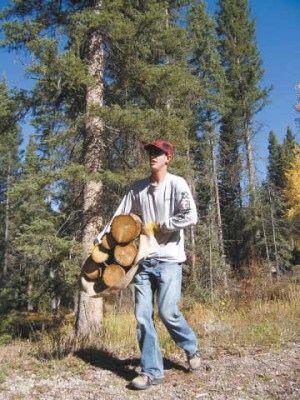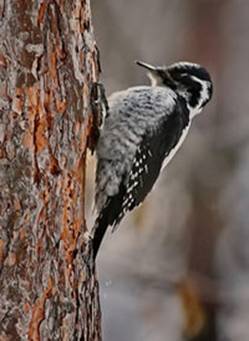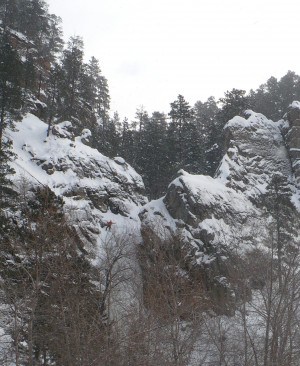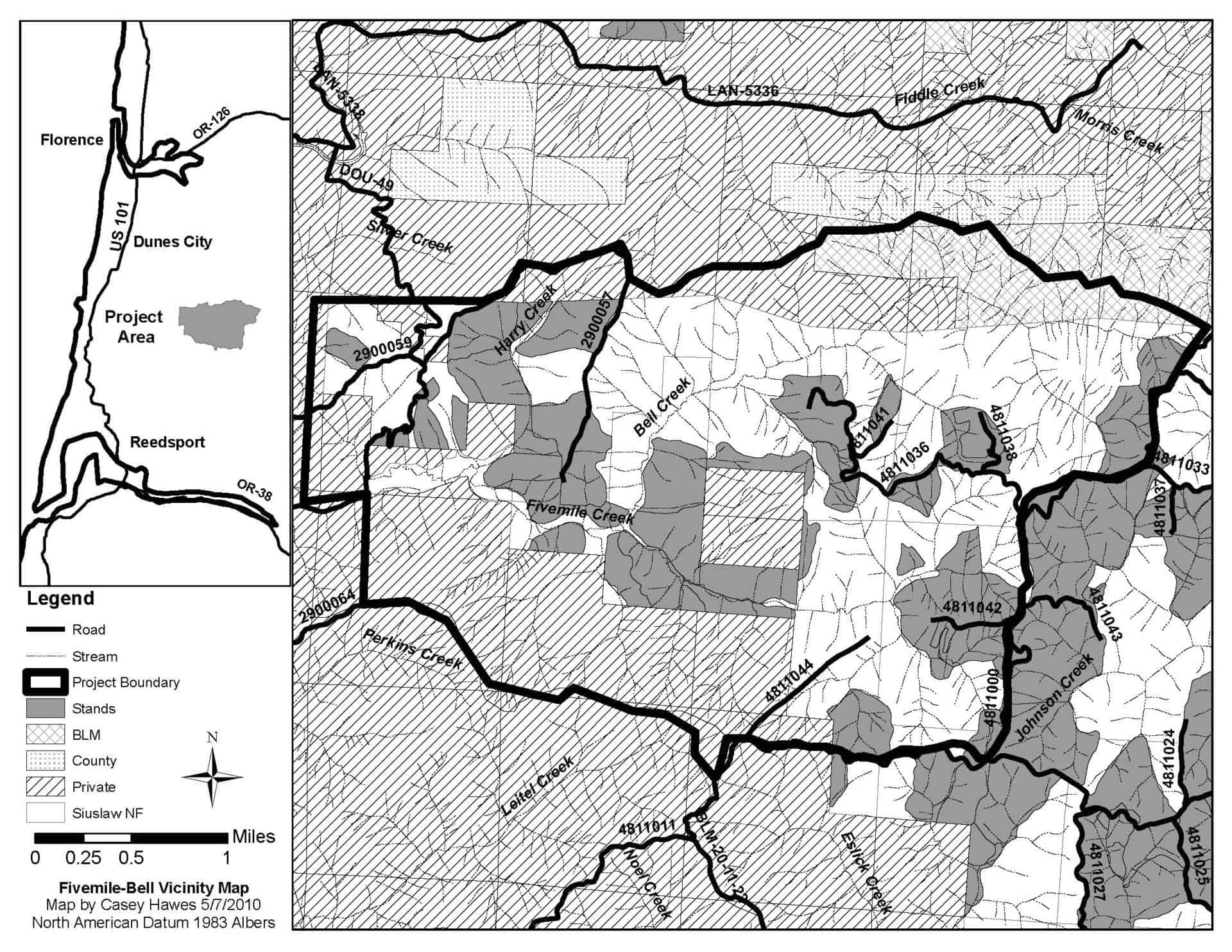When a Tree Falls in a Forest, Does it Make a Decision Memo?
By Steve Wilent
The Forestry Source, February 2012
This is the story of a tree that fell in the forest. Actually, two huge trees that were “joined together at the base, appearing as one for approximately 30 feet,” according to the Sequoia National Forest. But in any case this was not just any tree or trees. On September 30, a Sequoiadendron giganteum in the Giant Sequoia National Monument in California fell across the popular Trail of 100 Giants, a paved, half-mile path through a grove of truly awesome trees, harming no one, but blocking the trail.
“These two trees were truly giants, each about 240 feet tall, as much as 18 feet in diameter at the base,” wrote the editors of the Visalia (Calif.) Times-Delta in an editorial a couple of weeks later. “They were estimated to be as much as 2,000 years old. A fire about 200 years ago created a recess at the base of the trunk of one of the trees that was so large that groups of tourists frequently posed inside it.”
The Sequoia National Forest, which manages the monument, promptly and properly closed the trail until the debris was removed and the trail deemed safe for visitors once again. End of story? No, the beginning of the planning process.
Imagine a fantasy world in which federal foresters are allowed to make significant decisions based on their education and experience with a minimum of planning and documentation — in some cases, no formal planning or documentation. If in such a world a giant sequoia fell across a trail, a forester might walk the site the next day and admire the fallen giant(s), talk with coworkers, and then go home and have a beer or a drop of single-malt whisky (only to aid in the process of deliberation, of course). A few days later — or maybe in the next week or two, since this is not an average tree — the trail would be repaved or rerouted or both, and interpretive signs about the tree and its demise would be installed. Maybe they’d opt to cut a section from the tree and roll the “cookie” to a nearby area for viewing and ring-counting by legions of park visitors. In any case, a few weeks later, the job would be done.
However, this particular tree and trail are on US Forest Service land and thus are subject to the requirements of myriad laws and regulations, and the agency must seek public input, produce scoping documents, and jump through numerous other planning hoops. So it was that on October 22 about 100 people gathered at the site, according to the Porterville Recorder, to offer their input to the agency about what ought to be done. At least two environmental groups were represented — the Sierra Club and Sequoia Forest Keeper.
The Times-Delta praised the agency for its “open-minded approach” to dealing with the trail: “With enough input,” the editors wrote, “the Forest Service will certainly find a way to make the right decision.”
On December 9, the forest issued an eight-page scoping letter noting that it had received more than 150 verbal and written comments and suggestions about the fallen trees and the trail. The letter described the existing condition, the desired condition, the purpose and need, and so on. The desired condition, the letter stated, is that “The main loop provides an ADA-compliant trail for all visitors to enjoy…. The trail passes near the fallen sequoias so visitors can see them and learn about what happened there, while not contributing to unnatural erosion or resource damage.”
The letter included six alternatives and indicated Suggestion 2 as the Proposed Action: a boardwalk, meeting ADA requirements, that routes the trail around the fallen trees. This is a perfectly reasonable plan, developed under a planning process carried out by the book and executed very well by the Sequoia’s staff — no one could have done this better, under the current system. The forest expects to announce its decision in March. Some time thereafter, a contract will no doubt be advertised and awarded. By the time work begins on the trail, it will be at least six months since the trees fell, probably longer.
I suggest that such extensive scoping, analysis, and documentation in this case is excessive, as is the time it will take, due to all that planning, to complete this relatively simple project. If this were an isolated case, there’d be nothing for curmudgeonly editors to write about. The trouble is that at any one time there are hundreds of minor (but important) projects in various stages of planning. For example, the Mount Hood National Forest’s Schedule of Proposed Actions lists these projects, among others:
• Relocation of short sections of trail and reconstruction of walking trails above Timberline Lodge to the Pacific Crest Trail, involving the removal of broken asphalt and replacing it with packed gravel.
• Installation and maintenance of a solar-powered weather station, including a weather-proof building, solar panels, fencing, and various sensors and gauges.
• Digging a trench for geologic research on fault scarps. The trench, 100 feet long, 10 feet wide, and 15 feet deep, would be open for 2-3 weeks, after which the site would be restored.
Added together across the agency, the time, effort, and funding — an increasingly limited resource — devoted to the planning process for projects like this, let alone more-complex ones — is exorbitant.
In testimony before Congress on November 15, Chief Tom Tidwell said, “We need a [National Forest] planning rule that has less process and costs less, with the same or higher level of protections.”
I agree, and my take on the forthcoming revision of the National Forest planning rule is that Tidwell’s goals will be met, to some degree (see the interview with the Chief beginning on page 1). I commend the Forest Service for crafting a well-thought-out, if imperfect, rule, one with a good chance of easing what has been an immensely contentious and costly struggle over National Forest planning.
But what about “less process and costs less” when it comes to specific projects? How much time and effort is spent on collecting public input, compiling scoping letters, and producing reams of NEPA documents?
At the project level, the way out of the process thicket is to allow forest-level agency staff to make executive decisions based on their education and experience — and to expect regional and national managers to back them up. This requires a certain level of trust and, of course, accountability, not to mention a willingness to take reasonable risks.
In other words, at least for relatively small projects, a district ranger ought to have the authority to have a trail rebuilt, a skiers’ warming hut constructed, or a culvert replaced, without jumping through a series of administrative hoops. In the case of the Sequoia National Forest, the district ranger ought to have been allowed — expected — to decide on a course of action on her own and then delegate staff to carry out the restoration of the trail as soon as practicable, all without necessarily conducting formal scoping and issuing a Decision Memo.
A transparent planning process is an essential part of managing federal lands. The public’s right to be involved is indispensable. Granted. However, one can have too much of a good thing. Without legal and regulatory reforms that let forest-managers manage, “less process and costs less” on the nation’s 155 National Forests and 20 Grasslands is just pie in the sky.








